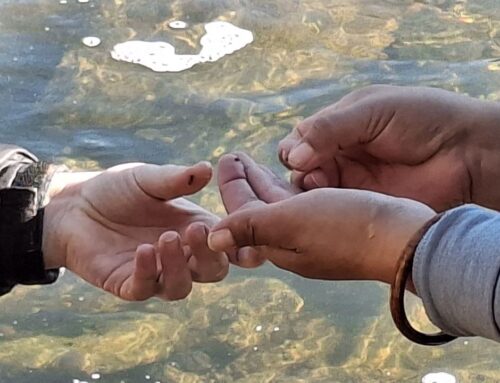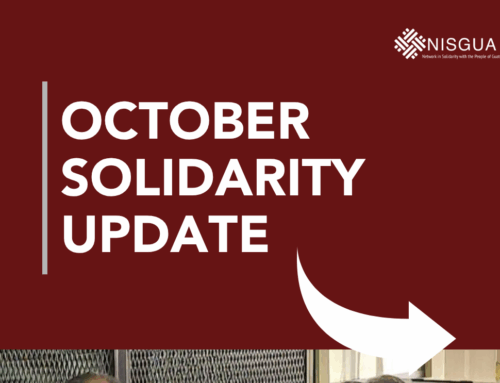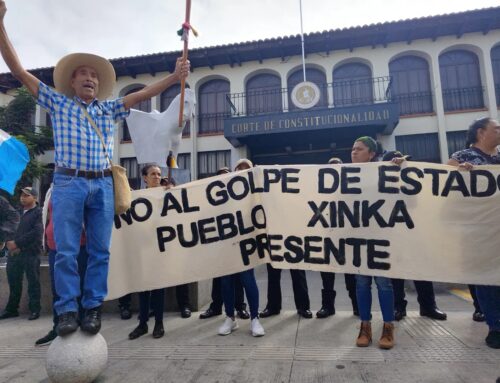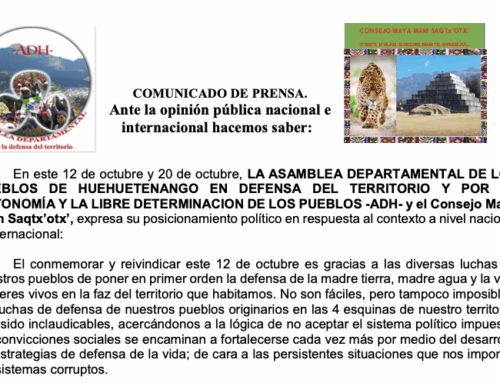Over the last several decades, transnational resource extraction companies have flocked to Central America. Licenses to construct hydroelectric dams, exploit minerals, or build the necessary infrastructure to make these types of projects possible are being granted by national governments in the region at an alarming rate. With little transparency, no meaningful consideration is being given to the communities most impacted by these projects, nor to the region as a whole – an extraordinarily ecologically diverse Isthmus whose countries are interdependently connected by complex river systems and waterways.
Grassroots movements in Guatemala against mining and the related megadevelopment projects are strong, diverse, and well-articulated. Communities emphasize the rights of indigenous peoples to free, prior, and informed consent – rights that are being violated when licenses are granted without due consultation nor respect for indigenous self-determination. Many oppose these types of projects for spiritual and cultural reasons, seeing the exploitation of Mother Earth as being fundamentally at odds with the balance sought in the maya cosmovision. Guatemala is largely an agricultural-producing country that relies on rainfall and water stores, and many are concerned about the contamination of water sources and reduced water availability. More than 15 million people living in such a small country means that mining operations and hydroelectric dams always have a direct impact on surrounding communities.
As one of the many expressions of resistance over the last 12 years in Guatemala, more than a million people have voted against resource extraction in their territories in community and municipal referenda. The same alliances between state and corporate actors that allow for these licenses to be granted with no transparency nor accountability to impacted communities, is also responsible for the repression of resistance movements.
According to the 2016 report from the Unit for the Protection of Human Rights Defenders (UDEFEGUA), attacks against environmental defenders standing up to an extractive economic model have significantly increased over the past several years. And, in 2016, they represent the group that received the most attacks. This follows a regional trend of an upswing in violence against environmental defenders. The high-profile assassination of Lenca activist Berta Cáceres in Honduras in 2015 is representative of scores of attacks against other environmental defenders in the region. In 2014, more than forty percent of the murders of human rights defenders in Central and South America were committed against environmental defenders and in most cases, government actors and companies were involved.
Violence against human rights and environmental defenders can imply the use of a variety of tools of aggression. Defenders face smear campaigns, stigmatization, and defamation on traditional and social media that misrepresent resistance movements and question the moral character of movement leaders. Individuals are criminalized for their work opposing these types of projects, while entire communities are subject to militarization and state surveillance. Both government and corporate actors use intimidation and direct attacks in an attempt to silence those voices that continue to stand in dissent. The following are some of the ways that environmental defenders are attacked:
Stigmatization & Defamation: delegitimizing the work of defenders, baseless claims in the media or in person, accusing them of being criminals, negatively portraying them as uneducated, profit-seeking individuals.
Criminalization: arbitrary criminal charges filed against defenders, under the guise of terrorism, unlawful association, inciting crime, among others; excessive use of pre-trial detention and prolonged legal proceedings follow, with the goal of impeding their ability to organize.
Militarization: use of militarized police or military forces against entire communities; leads to an environment of insecurity and repression, heightened trauma for massacre survivors; regularly includes suspension of certain civil liberties, arrests and physical attacks against known community leaders.
Targeted attacks: psychological attacks such as surveillance, threats, harassment, intimidation, property damage, theft, and threat of criminal persecution; physical attacks such as abuse, arbitrary detention, rape, kidnapping, and murder.
While communities are under attack on multiple fronts, resistance movements have changed shape, grown, and adapted over the last many years. In NISGUA’s latest report, “In defense of land: Environmental defenders on the frontlines of the global struggle for community self-determination and respect for the Earth,” we outline the ways in which communities are being attacked for standing up for land and life and the creative and resilient ways that people continue to organize.
Born out of this struggle for community self-determination, Youth Organized in Defense of Life (JODVID) is a vibrant, Guatemalan youth organization that sees young people as active political participants with the right to be heard on issues affecting their territory. The group builds leadership by training fellow youth to take action to protect the environment, raises awareness about the dangers of deforestation and mining in the area, and educates their community on the importance of protecting waterways in the agricultural region of Santa Rosa and Jalapa.
The full report is available in both English and Spanish.
NISGUA continues to provide international accompaniment to many environmental defenders exposed to this type of violence, including the communities in resistance to Tahoe Resources’ Escobal mine, communities in resistance to the Xalalá Dam, the recently-freed political prisoners from Huehuetenango, and many others. Follow @NISGUA_Guate on Twitter for regular updates.






Leave A Comment